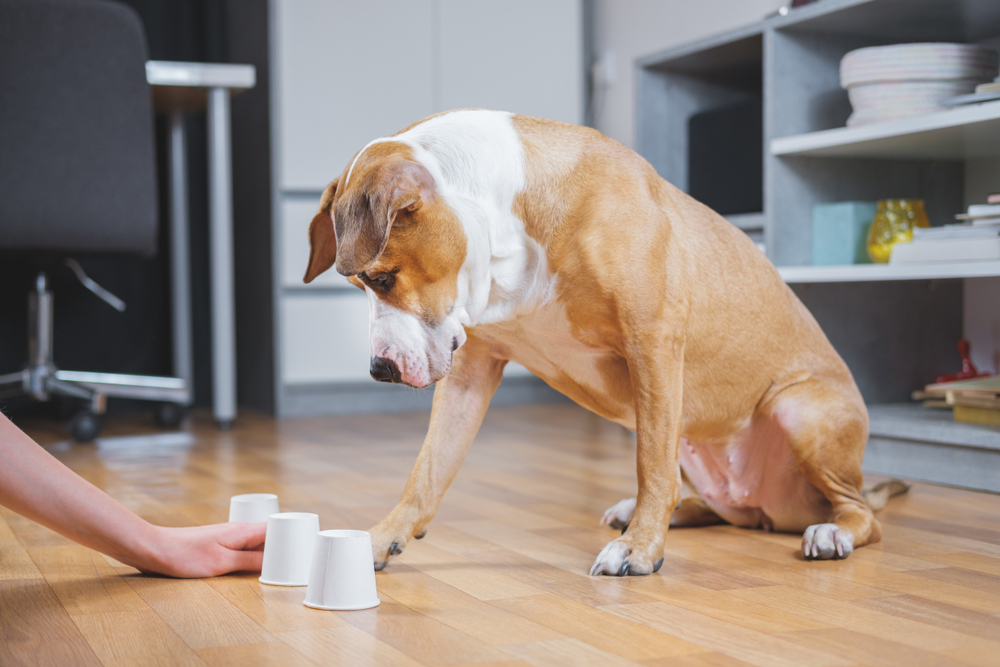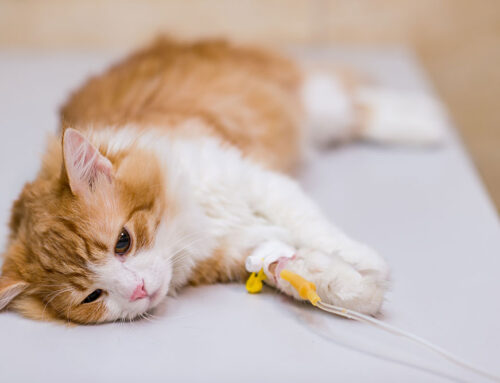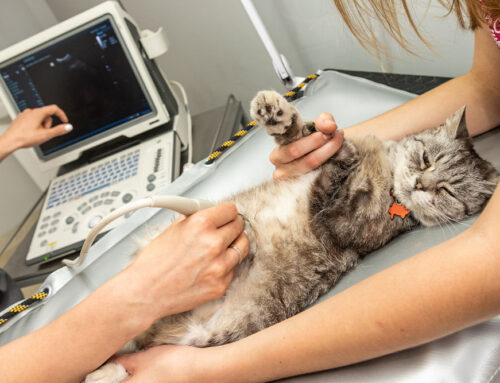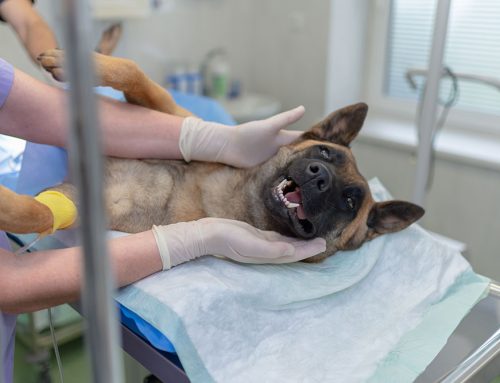Senior pets hold a special place in our hearts at Burlington Veterinary Center. Sure, they may be cranky when you wake them from a nap, or curmudgeonly about certain care tasks, but they’ve earned the right. Dogs and cats age much faster than we do—most dogs are considered seniors by age 7, and cats reach this milestone between 7 and 11. Giant-breed dogs have the earliest onset, achieving seniority around 5 to 6 years of age.
With such a short midlife, owners may care for their aging pet the same way they always have—without considering that senior pets require specific, modified care. Fortunately, such changes are easy to make, starting with the following seven steps.
#1: Schedule regular veterinary care for your senior pet
Yearly appointments may be sufficient during your pet’s younger years, but senior pets’ health can change rapidly. Twice-yearly exams, annual blood work, and non-invasive imaging, such as abdominal ultrasound, can detect changes in organ function and allow earlier intervention.
Regular appointments also allow us to closely monitor and manage any chronic pain, such as arthritis or degenerative disc disease. With medication and alternative therapies (e.g., laser therapy, acupuncture, and massage), Burlington Veterinary Center can keep your pet comfortable, and on their paws.
#2: Feed your senior pet a well-balanced diet
Proper nutrition is an easy way to optimize your pet’s health—especially during their later years—but they don’t necessarily need to switch to a senior diet. If your pet is healthy, and maintaining appropriate body weight on an adult or all life stages formula, change is not necessary. However, if your pet is overweight, or suffering from a common aging disease (e.g., kidney failure, arthritis, cancer, diabetes, heart disease), a specialized diet may help them return to a healthy weight, or slow disease progression. Ask your veterinarian for customized nutritional recommendations.
#3: Keep your senior pet moving—safely
Keeping your pet active can slow aging’s harmful effects. Regular low-impact exercise (e.g., walking, supervised swimming) can maintain your senior’s range of motion, flexibility, and cardiovascular stamina. If your pet isn’t accustomed to exercise, start with 10- to 15-minute sessions, and watch for fatigue, soreness, or stiffness. If your pet is consistently reluctant to exercise, consult with your veterinarian—your pet may have an underlying medical issue.
#4: Give your senior pet a weekly once-over
Give your pet a focused, weekly, head-to-tail brushing or petting session. In addition to being valuable quality time and healthy tactile stimulation, this lets you thoroughly examine your pet for changes, such as:
- Lumps or bumps
- Sores
- Skin infection or irritation
- Matted hair
- Missing hair (i.e., alopecia)
- Non-healing wounds
- External parasites (e.g., fleas and ticks)
Regularly feel your pet’s ribs, spine, and hind leg muscles, so you can appreciate any changes to their body condition. Any abnormal findings will warrant an appointment at Burlington Veterinary Center for a full work-up.
#5: Help your senior pet keep their confidence with mobility assistance
Painful degenerative conditions (e.g., arthritis, hip dysplasia, disc disease) and sensory changes (e.g., vision or hearing loss) often mean that senior pets miss out on regular household activities, which can lead to depression and detachment. Keep your aging pet engaged and mobile by making your home more accessible:
- Install ramps over stairs, or onto couches and beds.
- Place non-slip rugs on slick floors.
- Provide an orthopedic bed with low sides that your pet can get in and out of easily.
- Lower the litter box entry.
- Use a support harness to move large or disabled dogs without stress or strain.
- Turn on your porch light for better night visibility.
If your pet tends to wander, confine them to a central room in your home where they can be part of the action, without the risk of self-harm.
#6: Keep your senior pet’s mind sharp with mental challenges

Senior pets may not play like they used to, but that doesn’t mean they don’t need or want to have fun. Introduce your senior to enrichment toys, such as snuffle mats, stuffed Kongs, or treat-dispensing puzzles. Problem-solving games may help slow the onset or progression of cognitive dysfunction syndrome, encourage your pet to move, and think critically. Always start with beginner level toys and challenges, so that your pet is successful.
#7: Brush up on your senior pet’s dental care
Periodontal disease affects more than 70 percent of pets, causing significant pain, and bacterial infection that stresses the kidneys, liver, and heart. If you haven’t regularly brushed your pet’s teeth, schedule a dental evaluation at Burlington Veterinary Center, because your pet may need an anesthetized cleaning to restore their oral health and comfort. Afterward, maintain your senior pet’s healthy smile with regular brushing at home, or try dental chews, food, treats, and water-additives.
In general, senior pets sleep more and ask a lot less from their owners—however, you must not mistake their quietness for contentment. Take a closer look at your senior pet’s daily routine, and see how you can improve their health, comfort, and satisfaction. To schedule your senior pet’s appointment, contact Burlington Veterinary Center.







Leave A Comment